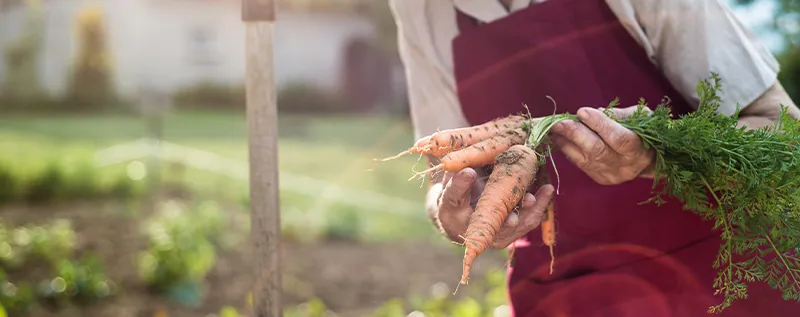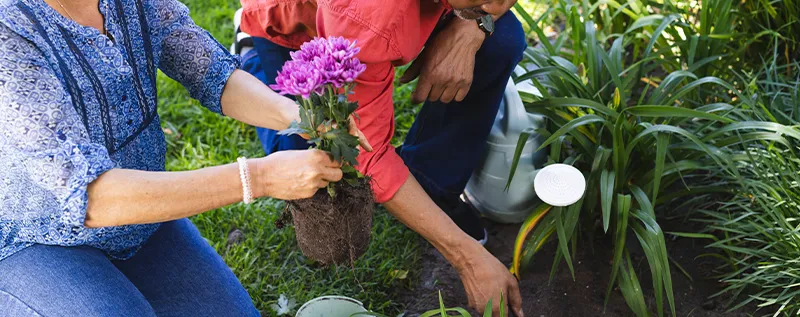There is increasing evidence that exposure to plants and green space, and particularly to gardening, is beneficial to mental and physical wellbeing.
Why Does Gardening Seem to be so Beneficial to Health?
It combines physical activity with social interaction and exposure to nature and sunlight. Working in the garden restores dexterity and strength, and the aerobic exercise that is involved can easily use the same number of calories as might be expended in a gym. Digging, raking and mowing are particularly calorie intense. However, like any physical activity, it’s essential to understand its potential risks and how to mitigate them effectively.

The Benefits of Gardening on Health and Wellbeing
Gardening has been linked to various positive outcomes for both mental and physical well-being. One of the primary reasons for its therapeutic effects is its ability to combine physical activity with social interaction and exposure to nature and sunlight.
Engaging in gardening activities such as digging, raking, and mowing provides a form of low-impact aerobic exercise. These tasks not only help to restore dexterity and strength but also burn a significant number of calories. For individuals who may not frequent the gym, gardening can serve as a practical alternative to staying physically active.
Spending time in green spaces and nurturing plants has been associated with reduced stress levels, improved mood, and enhanced cognitive function. The act of gardening fosters a sense of accomplishment and connection to nature, which can alleviate symptoms of anxiety and depression. Gardening often involves collaboration with others, whether it’s family members, neighbours, or fellow enthusiasts. This social aspect of gardening promotes a sense of belonging and fosters positive relationships, contributing to overall social well-being.
The Potential Risks of Gardening
While gardening offers numerous benefits, it’s essential to recognize the potential risks associated with prolonged or improper gardening practices, particularly concerning back health.
The repetitive motions involved in gardening, such as bending and lifting, can lead to overuse injuries over time. Just as a rope gradually wears down with repeated stress, the muscles and tendons in the back can become strained or injured with sustained bending or lifting. In addition to overuse injuries, sudden movements or lifting heavy objects improperly can result in acute back pain or muscle spasms. Activities like bending forward for extended periods or lifting heavy pots without proper technique can increase the risk of injury.

To enjoy the benefits of gardening while minimising the risk of back pain or injury, consider implementing the following strategies:
• Proper Body Mechanics: Learn to lift objects correctly by bending the knees and using the legs rather than relying solely on the back muscles.
• Posture Awareness: Be mindful of your posture while gardening, and alternate between different positions to avoid prolonged bending or stooping. Take regular breaks to stretch and relieve tension in the back muscles.
• Warm-up and Stretching: Before starting gardening activities, warm up with gentle stretches to prepare the muscles for physical exertion. Incorporate stretching breaks throughout the gardening session to maintain flexibility and prevent stiffness.
• Use of Tools and Equipment: Invest in ergonomic gardening tools and equipment designed to reduce strain on the body. Consider using knee pads or a gardening stool to minimize stress on the knees and back during prolonged periods of kneeling or bending.
• Moderation and Rest: Pace yourself and avoid overexertion by spreading out more strenuous tasks over time. Take regular rest breaks to give your muscles and spine a chance to recover and prevent fatigue.
Strengthening Exercises, Stretches, and Warmups for Gardening
If you planning on starting work in your garden, be sure to watch this quick video with George’s essential exercises and stretches that will help set your body up for working on your green thumb.


